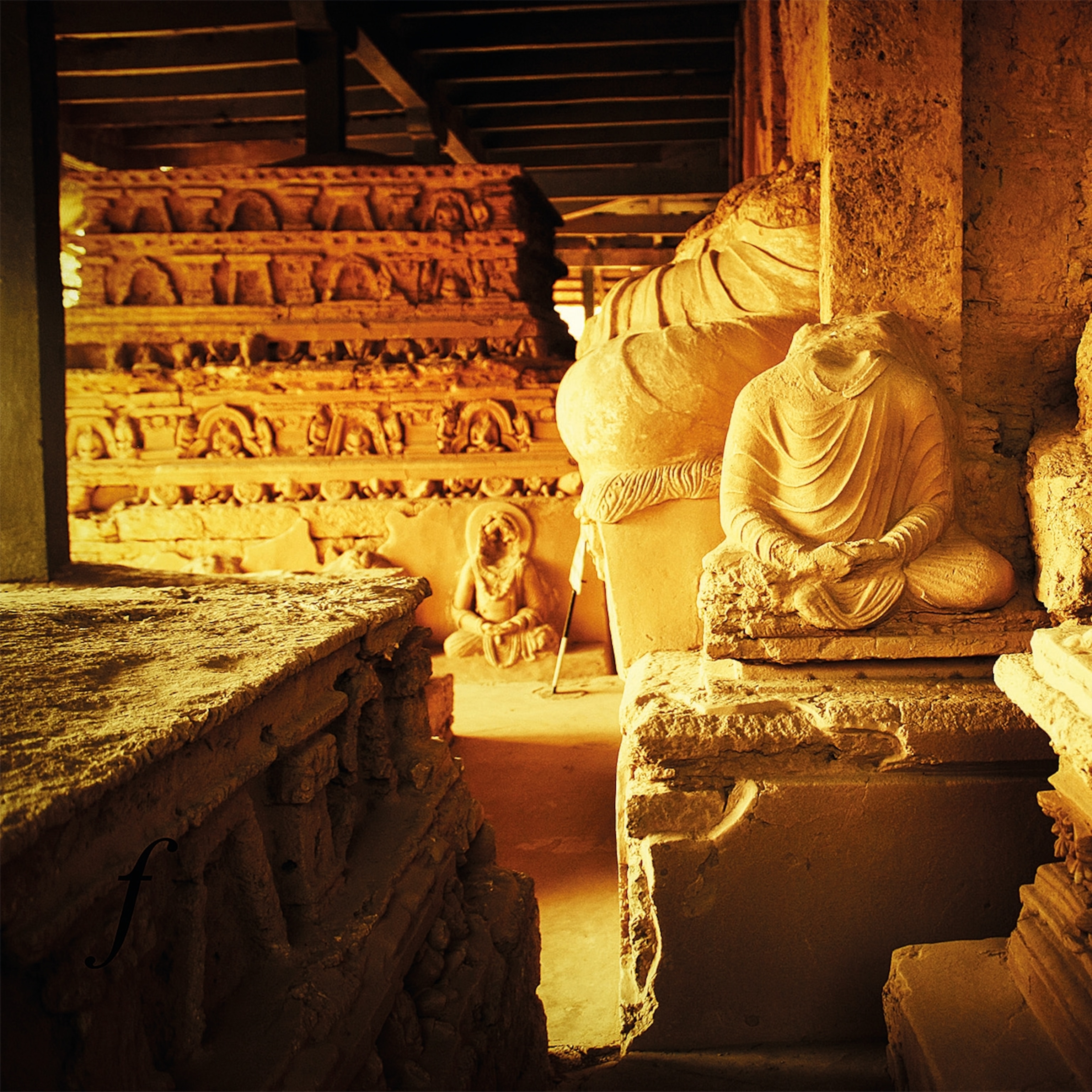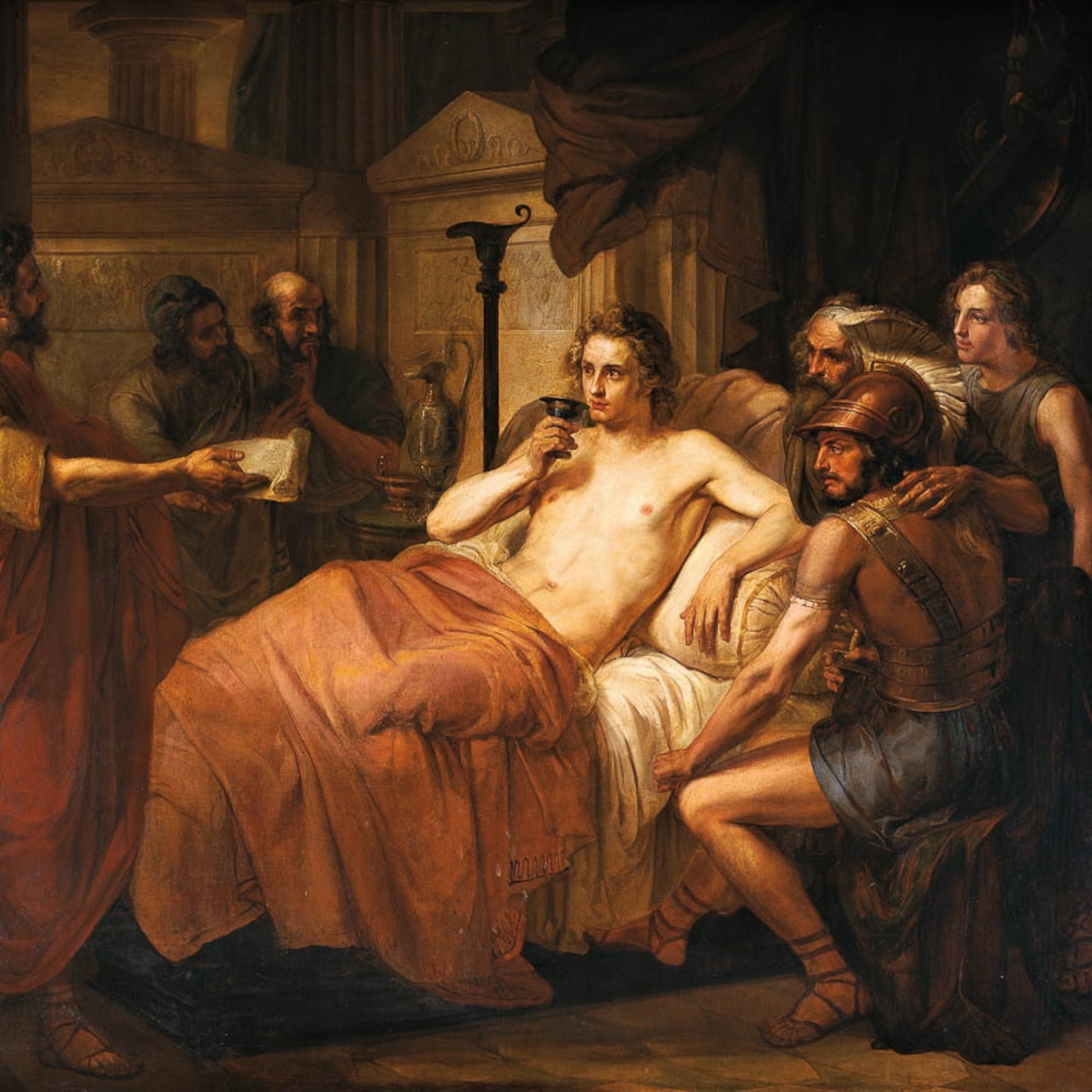
Purple Reign: A passion for purple built the Phoenicians' vast trading empire
The seafaring Phoenicians controlled the Mediterranean market for a vibrant purple dye crafted from humble sea snails and craved by powerful kings.
Phoenician myth tells the tale of a beautiful sea nymph, Tyrus, and the god Melqart, who sought to win her heart. Melqart dispatched his faithful hound to scour the beaches of modern-day Lebanon in search of a gift for her. When the dog returned, his muzzle was stained violet. When Melqart looked closer, he found in the dog’s teeth a crushed sea snail, oozing and purple.

The god’s dog had certainly stumbled on a treasure, and Melqart showed it to Tyrus. Immediately smitten with the color, Tyrus agreed to marry Melqart if he could fashion her a robe in the same vibrant hue. Determined and resourceful, Melqart collected enough sea snails to fulfill the wish of his beloved, and thus “Tyrian purple” and the Phoenician trade in textiles was born.
Although this legend originates in later Greco-Roman traditions, the depiction of a dog chewing the shell of a murex sea snail has been found on several Tyrian coins, indicating that the tale was linked to Phoenician identity, and that it may well have had Phoenician origins. Despite the mythologized accounts for the genesis of Tyrian purple, this dye played a fundamental role in shaping and defining the real history and economy of the Phoenicians. (Blue dogs were spotted in India. In this case, snails didn't cause the stain.)

Masters of the sea
Although the Phoenicians were among the most influential of the Mediterranean peoples of the first millennium B.C., they are also one of the least understood by modern historians. Strictly speaking, there was no one kingdom called “Phoenicia” but a series of cities occupying a strip of land along the coast of modern-day Lebanon, Syria, and northern Israel.
The name “Phoenician,” given to them by the Greeks, is thought to relate to purple. The Greeks themselves were unclear on the origins of the word, phoínix, and as it could be used to signify a reddish purple color, it came to be regarded as an allusion to the purple fabric for which the Phoenicians were famed. Another popular theory was that the word could be linked to the legendary king Phoinix, believed by some to have instigated the use of purple dye in the city of Tyre. The Greeks first used the term Phoenician at some point during the ninth to seventh centuries B.C., but—significantly—it has no known equivalent in any of the languages of the ancient Near East, including Phoenician itself. (Elegant Tanagra figurines enchanted ancient Greece.)

The Phoenician people were preeminent merchants, sailors, explorers, and settlers, who—unlike their Syrian and Canaanite neighbors—never sought to create a unified military empire or kingdom. Instead, they coalesced into several fiercely independent city-states, the most important of which were Arwad, Byblos, Berot (modern Beirut), Sidon, Sarepta, and Tyre. Politically autonomous, these city-states shared a common language and script as well as several distinctive cultural characteristics and traits. They were further unified by their maritime and trading interests, thus allowing modern historians to characterize them as a distinct civilization; however, the Phoenicians never considered themselves as having a shared ethnic identity. Instead they most likely would have defined themselves by the city where they held citizenship: “I am a man of Byblos” or “I am from Sidon” rather than “I am a Phoenician.”
In antiquity their neighbors—the Egyptians, the Hebrews, and the Neo-Assyrian Empire to the east—considered the Phoenicians as merchants par excellence, whose commercial acumen across the Mediterranean provoked respect and admiration, as well as ire and envy. Although outsiders’ views of the Phoenicians as commercially canny verge on caricature, the literary and archaeological sources bear out the centrality of trade to Phoenician culture. By the end of the fifth century B.C. their trade routes stretched from India in the east to at least as far west as Mogador in North Africa (modern Essaouira in western Morocco). Their networks encompassed the entire Mediterranean and significant parts of the Black Sea, Red Sea, and Persian Gulf.
Along these routes, the Phoenicians exported an extensive range of commodities, including ornate metal objects, jewelry, carved ivories, cedarwood, athyrmata (trinkets), wine, and olive oil. But what stirred particular desire was their fine quality, brightly colored fabrics. In Book VI of The Iliad, Homer describes the kind of fabric considered fit for Hecuba, queen of Troy:
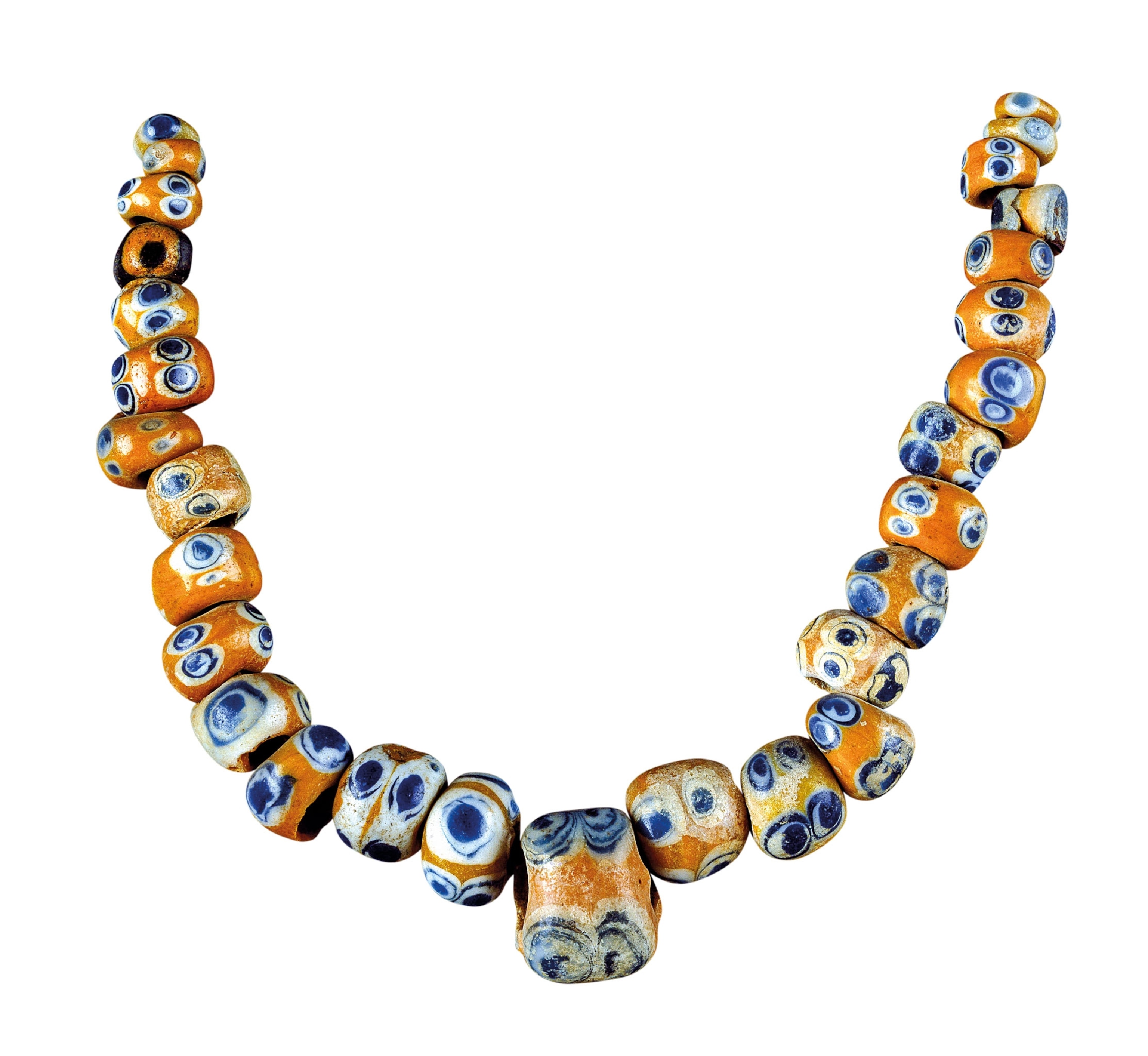
She [Hecuba] then went down into her fragrant store-room, where her embroidered robes were kept, the work of Sidonian women, whom [Paris] had brought over from Sidon when he sailed the seas upon that voyage during which he carried off Helen. Hecuba took out the largest robe, and the one that was most beautifully enriched with embroidery, as an offering to [Athena]: it glittered like a star. (Translation by Samuel Butler, 1898)
Brightly decorated garments feature prominently among the Phoenician tribute to the Assyrians. “Your awnings were made of finest cloth, of purple,” notes the Old Testament prophet Ezekiel, in his inventory of the luxury products traded by Tyre. (A 2,600-year-old Phoenician wine 'factory' was unearthed in Lebanon.)
Tubs and Horse Heads

From the ninth century B.C., as they spread throughout the Mediterranean, the Phoenicians were famous for their boats. Ancient Greek accounts desribe their distinctive ships and called them gauloi—tubs—or hippo, from the horse heads on their prows. Archaeologists got a chance to find out for themselves when they explored the remnants of two remarkably preserved ships in 1999. Two Phoenician vessels were surveyed off the coast of Israel in conjunction with the U.S.-based Leon Levy Expedition. Dating from the eighth century B.C., they measure 52 feet in length and 20 feet wide. As the Greeks suggested, they are rather tubby—all the better to carry cargo. In this case it was 12 tons of wine each, perhaps destined for Egypt or the new colony of Carthage.
Precious purple
In antiquity fabric production was the most labor-intensive of all crafts. It is hard to overstate its cultural, social, and economic significance. Clothing not only offered people protection from the elements but also denoted social status. Cloth was used to record events or stories in the form of tapestries, and it could even be of such value that it functioned as a form of currency.
Very little is known about the appearance or method of manufacture of Phoenician fabrics as very few fragments of it have survived. Despite this dearth of information in relation to textiles, the ancient sources do provide detailed accounts of the production and use of the purple dye. The discovery of substantial facilities for murex harvesting, processing, and dyeing at Arwad, Beirut, Sidon, Sarepta, Tyre, and other cities along the Levant coast, highlights just how important and widespread this industry was among the Phoenicians. (Living descendants of Biblical Canaanites have been identified via DNA.)
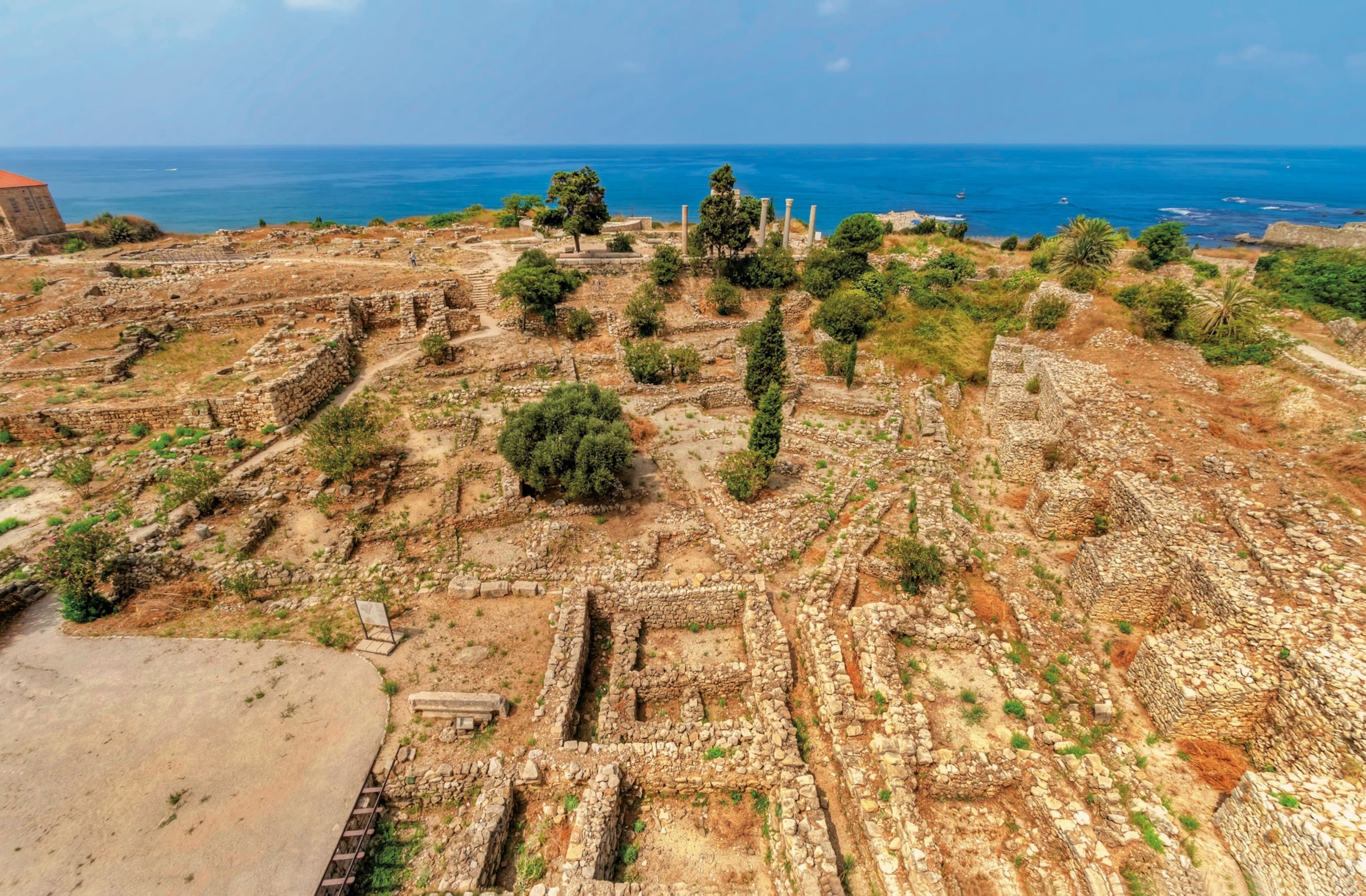
The Roman naturalist Pliny the Elder offers the most comprehensive description of how the dye was manufactured in his Natural History, written in the first century A.D. The basic raw material was an opaque liquid that was obtained from the mucus glands of two types of sea snail, Murex trunculus and Murex brandaris. The former was used to make a blue-purple dye known as royal blue while the latter was used to make Tyrian purple.
Both dyes were indelible and did not fade easily, a rare property for ancient colorants. Its production, however, produced an offensive smell, and the irony that such a prized product could come out of such an unpleasant process was not lost on ancient authors, such as Pliny himself, who wrote:
Let us be prepared then to excuse this frantic passion for purple, even though at the same time we are compelled to enquire, why it is that such a high value has been set upon the produce of this shell-fish, seeing that while in the dye the smell of it is offensive, and the color itself is harsh, of a greenish hue, and strongly resembling that of the sea when in a tempestuous state?
Turning mollusks into gold

The extraction of purple dye from the carnivorous sea snail murex was described in detail by Pliny the Elder in his Natural History. It was a lengthy, smelly process. The first step was to harvest the mollusks from the sea by submerging mesh traps baited with cockles or pieces of fish. When enough snails were caught, the mucous gland that produces the dye had to be extracted from the animal. Large murices had their glands removed with a metal tool, while smaller specimens—body, gland, and shell—were crushed into a pulpy mass. The glands were then placed into a vat of salt water and heated for 10 days. The glands would melt, leaving behind a colorless compound that produced the purple dye when re-exposed to air and sunlight. Production created a foul smell for which the industry became famous. In most Phoenician settlements the dye manufacturing facilities could be found on the outskirts of a town or city, well downwind from residential areas. The stench was worth it, for the dye could fetch its weight in gold.
As each murex produced only a few drops of precious mucus, the manufacture of commercial quantities of Tyrian purple required the harvesting of vast quantities of these creatures. Archaeologists have calculated that 12,000 averaged-size mollusks (just under a quarter of an inch long) were required to produce barely 0.05 of an ounce of dye. Such an amount was sufficient to color just the trim of a regular-size garment, and so distilling enough dye to stain even a small piece of cloth required enormous numbers of the animals. To dye an entire robe would cost a fortune.
You May Also Like
Consequently, Tyrian purple dye was at times worth more than its equivalent weight in silver or gold while purple-dyed fabrics could command extraordinarily high prices. To give one example: according to the fourth-century B.C. historian Theopompus (quoted here much later by Athenaeus), men in the city of Colophon in what is today Turkey, “used to walk about the city wearing purple garments, which was at that time a color rare even among kings, and greatly sought after; for purple was constantly sold for its weight in silver.” (This abandoned East African city once controlled the medieval gold trade.)
In fact, purple dyes were so desirable that astute businessmen created a multitude of inferior-quality imitation hues to meet the considerable demand. Because of this phenomenon, fragments of purple-colored textiles and pot-sherds have to be subject to chemical analysis by archaeologists before they can by designated as genuine examples of royal blue or Tyrian purple.
The strength of Tyre
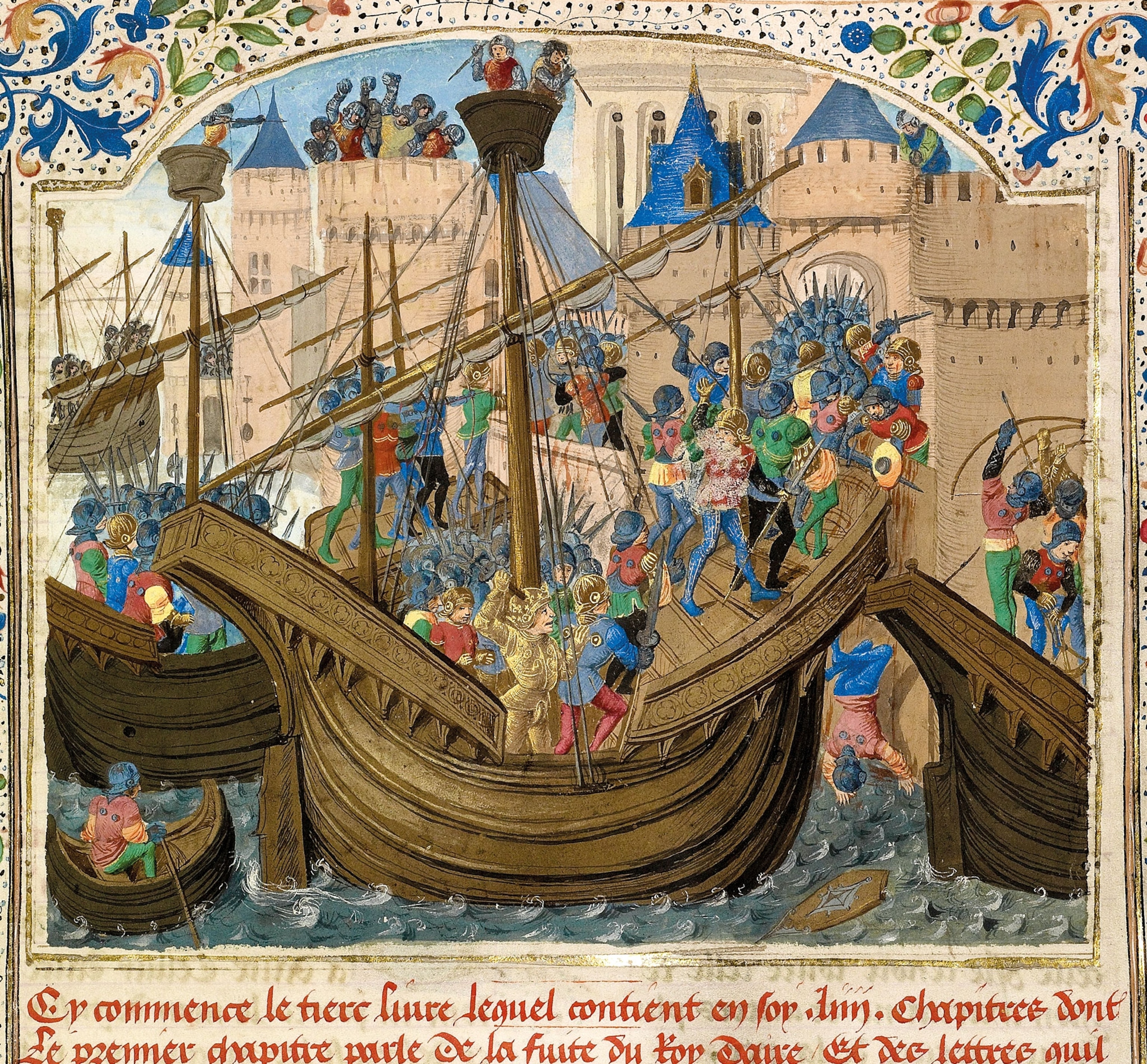
The city of Tyre flourished for much of the first millennium B.C., thanks in part to the lucrative trade in Tyrian purple. Split between the Lebanese mainland and an island just off the coast, Tyre’s geography led to the city’s success. Its mainland portion gave easy access to timber and other rich natural resources, while the island provided a strategic defense and rapid access to the sea. Tyre’s judicious balancing act between autonomy and fealty to the regional powers of the day enabled it to thrive for centuries. It supplied Jerusalem with the costly materials for Solomon’s Temple in the 10th century B.C. Later it surpassed Sidon as the preeminent Phoenician trading power, and it went on to found the colony of Carthage in North Africa in around 814 B.C. When Tyre resisted Alexander the Great, however, its luck ran out. Building a causeway from the mainland, Alexander took the city in 332 B.C. and executed thousands of its inhabitants.
Fading away
Although the coast of Lebanon could sustain a high concentration of murices, when demand outstripped supply they were imported from other areas of the Mediterranean and from the Gulf of Aqaba. The decimation of local murex populations, combined with the desire to acquire ever increasing numbers, led the Phoenicians to found overseas settlements in regions where this type of industry could flourish.
The presence of sizable quantities of crushed murex shells at Almuñécar (Sexi), Toscanos, and Morro de Mezquitilla in Spain; Carthage, Kerkouane, and Djerba (Meninx) in Tunisia; and Essaouira (Mogador) in Morocco, provide evidence for the large-scale manufacture of purple dye in both Iberia and North Africa. According to Pliny, after Tyre, it was the North African city of Meninx that produced the most vivid hue of purple. Thus it could be said that the craze for purple went hand in hand with the Phoenicians’ greatest achievement—the adaptation and transmission of the alphabet across the Mediterranean, a revolutionary experiment that they exported alongside their other commodities.
For much of their history the Phoenician cities had flourished in the service of larger empires, including Egypt, Assyria, Babylon, and Persia. It was Alexander the Great in the fourth century B.C. who ultimately undid them, when he sacked Tyre in 332 B.C. Phoenicia was subjected to strict Macedonian rule for the next 270 years, and by the end of the first century B.C. it had become so hellenized that Plutarch referred to its inhabitants as Hellenes.
Rome would be the next to take over the Phoenician cities after the Roman general Pompey had subdued the last remains of the Seleucid Empire in 64 B.C. Phoenicia was formally incorporated into the Roman province of Syria, which heralded the beginning of a period of romanization. By the close of the first century A.D. there were very few remnants of the indigenous culture that had existed before the arrival of the Macedons and Romans.
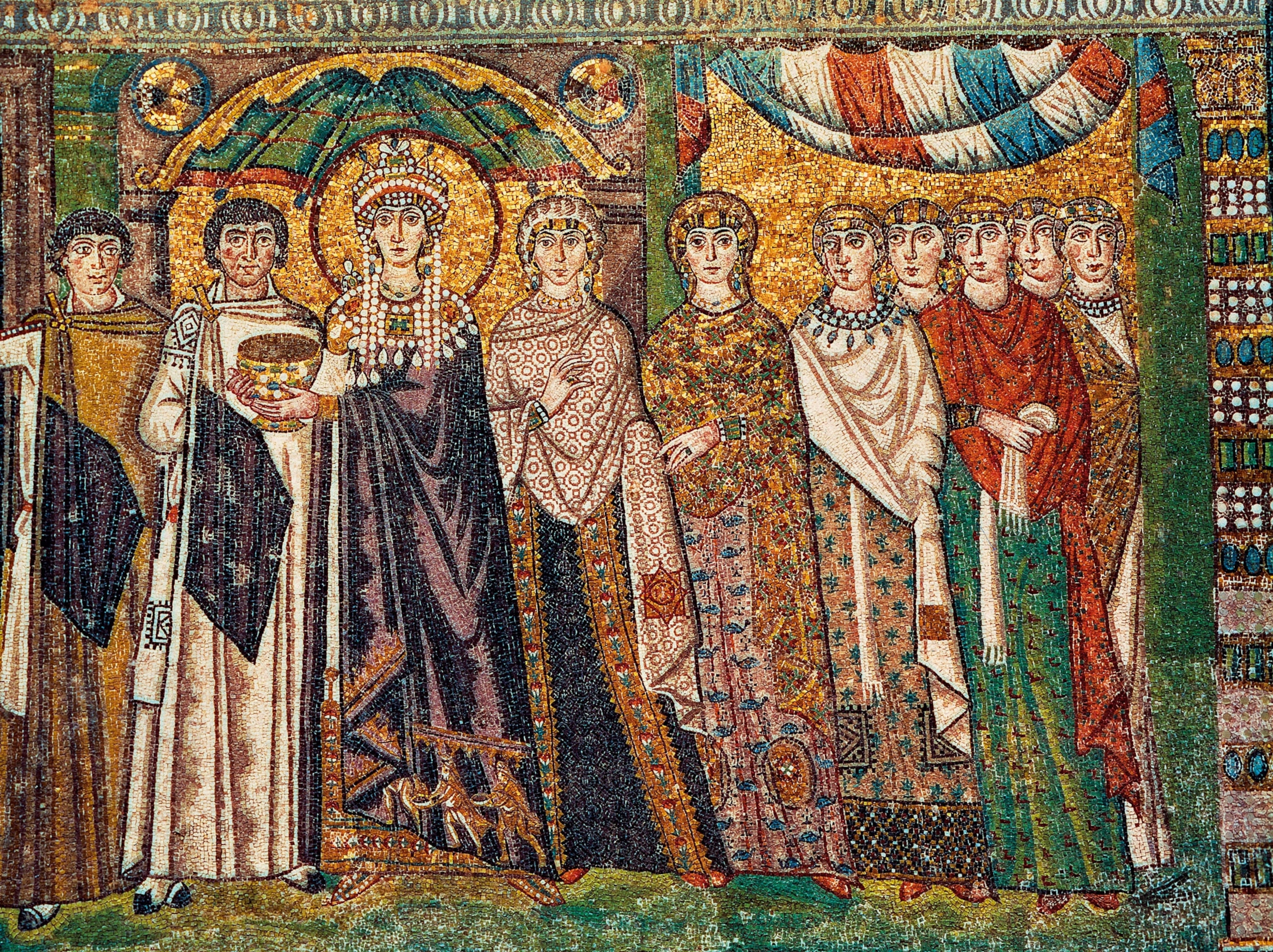
Even though the Phoenicians’economic dominance gradually faded into history, the purple textile industry they had created continued to flourish. Purple fabric remained a luxury that only the rich and powerful could afford. Several laws were passed that even decreed who could and could not wear purple. The Romans began developing their own techniques for farming the murex and other shellfish in rock-cut pools, which kept the practice alive for centuries. Production of the purple dye continued in the eastern half of the Roman Empire until the sack of Constantinople in A.D. 1204. Today synthetic dyes and advances in production have made purple fabric available to all. Despite the equal access, to this day many countries around the world still associate the Phoenicians’ Tyrian purple with royalty, wealth, and splendor.

